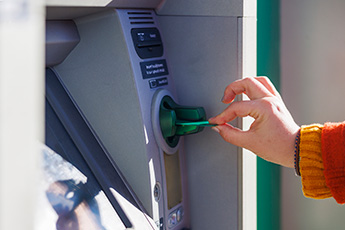In 1982, philosopher Peter Suber introduced Nomic, a game based entirely on the fact that players can, literally, modify its rules while playing. Often played by groups within areas of academia such as law and philosophy, Nomic begins with an initial set of guidelines for how players can suggest, debate, and vote on proposed rule changes. The game, which is named after a derivation of the Greek word for law, was created to demonstrate that whenever rules can be altered, the changes made are often conflicting or unclear, making it difficult for people to determine what is ultimately legal.The banking industry is currently learning something about adapting to changing rules itself. In the wake of recent regulatory modifications made by both the Federal Reserve Board and the Office of the Comptroller of the Currency (OCC), financial institutions are now free to offer cryptocurrencies — an attractive prospect, given consumers’ rapid adoption of cryptocurrencies. Crypto’s Growing PopularityCrypto has rapidly moved from being a niche investment area to one that is not only widely invested in but also routinely used as currency as well. According to the findings of a study from the National Cryptocurrency Association, 55MM adults now own digital assets; 76% of them believe that digital assets have improved their quality of life. It isn’t just wealthy people or the young using crypto either, as 26% of crypto holders make under $75K per year, while 15% are 55 or older. Around 39% of crypto owners use it for routine purchases.
Regulators’ Changes of HeartThe reality of crypto’s potential has not been lost on public officials, as the Trump administration has stated its intention of making the US the crypto capital of the world. Regulators have been quick to follow the administration’s lead.Progress toward greater adoption of crypto by the banking world began in early March, when the OCC released Interpretive Letter 1183. The letter repealed the regulator’s previous requirement that banks obtain approval to engage in activities such as crypto-asset custody, stablecoin issuance, and the use of distributed ledger technologies (blockchains). In late April, the Federal Deposit Insurance Corporation (FDIC) and the Board of Governors of the Federal Reserve System issued a joint statement withdrawing crypto-asset guidance that previously required financial institutions to provide regulators advance notice of crypto activities and to obtain formal approval before participating in dollar-denominated token activities. In June, the Federal Housing Finance Agency (FHFA) instructed Fannie Mae and Freddie Mac to begin preparation that would allow borrowers to use crypto assets as collateral for single-family mortgages, without requiring that they be converted to US dollars. In July, the Guiding and Establishing National Innovation for U.S. Stablecoins Act (GENIUS Act) was signed into law. The GENIUS Act aims to create clear rules for the issuance of oversight of stablecoins, including transparency, reserve requirements, and anti-money laundering regulations. While the passing of the GENIUS Act signals a move toward more rigorous oversight of digital assets, that doesn’t mean regulators are done discussing crypto and establishing guidelines for its usage. Just this week, the U.S. Department of the Treasury issued a request for comment on the GENIUS Act, regarding potential fraud monitoring methods for digital assets. Decoding Recent Crypto LegislationThe collective result of the above changes is that financial institutions are now free to engage in crypto activities, a change that could help community financial institutions (CFIs) better compete against their largest rivals. The potential benefits of embracing crypto for CFIs include enhanced efficiencies by enabling organizations to improve the underlying ledger operations at the center of their banking activities. Liat Shetret, the vice president of global policy and regulation at blockchain analytics and crypto compliance provider Elliptic, believes the changes will level the playing field between CFIs and larger institutions. One of the most noticeable differences will be that financial institutions now have the ability to send new digital asset-based products to the market faster. “There’s no need to build before you know what you’re building for the market. And that’s a huge game changer, because you can…create your own pilot programs, sandboxes, innovation labs, and trial and test a variety of different digital asset products that meet your risk tolerance and risk threshold and not need to run that by the regulators,” said Shetret in a recent interview with American Banker. How To Explore Crypto SafelyBefore diving into crypto, CFIs need to determine how actively they want to participate in this space and how much risk they are willing to take on to do so. The first thing CFIs should do if they’re considering entering the crypto market is review their risk exposure — both for their overall exposure and for specific digital assets. This includes understanding where they may already be exposed to digital asset risks through current customer activities. A critical part of this assessment is learning how customers are using and interacting with crypto. CFIs should survey their customers to identify which crypto products and services are most interesting to them, how they’re already using crypto, and their underlying interest — whether as a currency, an investment, or otherwise — as this will help inform both risk considerations and product planning.Here are a few of the ways that CFIs may want to consider engaging in crypto, exploring products and services in this area to round out their offerings for current customers, and working to attract new customers interested in crypto:
Regulators’ Changes of HeartThe reality of crypto’s potential has not been lost on public officials, as the Trump administration has stated its intention of making the US the crypto capital of the world. Regulators have been quick to follow the administration’s lead.Progress toward greater adoption of crypto by the banking world began in early March, when the OCC released Interpretive Letter 1183. The letter repealed the regulator’s previous requirement that banks obtain approval to engage in activities such as crypto-asset custody, stablecoin issuance, and the use of distributed ledger technologies (blockchains). In late April, the Federal Deposit Insurance Corporation (FDIC) and the Board of Governors of the Federal Reserve System issued a joint statement withdrawing crypto-asset guidance that previously required financial institutions to provide regulators advance notice of crypto activities and to obtain formal approval before participating in dollar-denominated token activities. In June, the Federal Housing Finance Agency (FHFA) instructed Fannie Mae and Freddie Mac to begin preparation that would allow borrowers to use crypto assets as collateral for single-family mortgages, without requiring that they be converted to US dollars. In July, the Guiding and Establishing National Innovation for U.S. Stablecoins Act (GENIUS Act) was signed into law. The GENIUS Act aims to create clear rules for the issuance of oversight of stablecoins, including transparency, reserve requirements, and anti-money laundering regulations. While the passing of the GENIUS Act signals a move toward more rigorous oversight of digital assets, that doesn’t mean regulators are done discussing crypto and establishing guidelines for its usage. Just this week, the U.S. Department of the Treasury issued a request for comment on the GENIUS Act, regarding potential fraud monitoring methods for digital assets. Decoding Recent Crypto LegislationThe collective result of the above changes is that financial institutions are now free to engage in crypto activities, a change that could help community financial institutions (CFIs) better compete against their largest rivals. The potential benefits of embracing crypto for CFIs include enhanced efficiencies by enabling organizations to improve the underlying ledger operations at the center of their banking activities. Liat Shetret, the vice president of global policy and regulation at blockchain analytics and crypto compliance provider Elliptic, believes the changes will level the playing field between CFIs and larger institutions. One of the most noticeable differences will be that financial institutions now have the ability to send new digital asset-based products to the market faster. “There’s no need to build before you know what you’re building for the market. And that’s a huge game changer, because you can…create your own pilot programs, sandboxes, innovation labs, and trial and test a variety of different digital asset products that meet your risk tolerance and risk threshold and not need to run that by the regulators,” said Shetret in a recent interview with American Banker. How To Explore Crypto SafelyBefore diving into crypto, CFIs need to determine how actively they want to participate in this space and how much risk they are willing to take on to do so. The first thing CFIs should do if they’re considering entering the crypto market is review their risk exposure — both for their overall exposure and for specific digital assets. This includes understanding where they may already be exposed to digital asset risks through current customer activities. A critical part of this assessment is learning how customers are using and interacting with crypto. CFIs should survey their customers to identify which crypto products and services are most interesting to them, how they’re already using crypto, and their underlying interest — whether as a currency, an investment, or otherwise — as this will help inform both risk considerations and product planning.Here are a few of the ways that CFIs may want to consider engaging in crypto, exploring products and services in this area to round out their offerings for current customers, and working to attract new customers interested in crypto:
- Wealth management services for investors interested in integrating crypto assets into their investment portfolios.
- Banking services for stablecoin issuers or custodial services for holders of the fiat funds that stablecoins are pegged to.
- Banking services for crypto businesses or businesses that generate the majority of their income from crypto assets.
- Digital custody of and storage for crypto assets.
As regulatory requirements evolve and crypto’s popularity continues to expand across all segments of the population, CFIs have a growing opportunity to thoughtfully explore digital asset offerings. By carefully assessing risk, understanding how their customers already interact with crypto, and considering which products best fit their needs, CFIs can responsibly broaden their services while staying aligned with new regulations. With a prudent, customer-focused approach, these institutions can position themselves to compete and serve their communities in an increasingly digital financial landscape.




